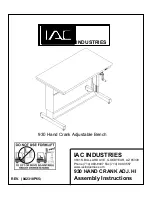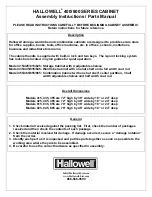
Rev. 1.50
1�6
����st ��� �01�
Rev. 1.50
1��
����st ��� �01�
HT66F0175/HT66F0185
A/D Flash MCU with EEPROM
HT66F0175/HT66F0185
A/D Flash MCU with EEPROM
Step 8
If A/D conversion interrupt is used, the interrupt control registers must be correctly configured
to ensure the A/D interrupt function is active. The master interrupt bontrol bit, EMI, and the A/D
conversion interrupt control bit, ADE, must both be set high in advance.
Step 9
The A/D conversion procedure can now be initialized by setting the START bit from low to high and
then low again.
Step 10
If A/D conversion is in progress, the ADBZ flag will be set high. After the A/D conversion process
is complete, the ADBZ flag will go low and then the output data can be read from SADOH and
SADOL registers.
Note: When checking for the end of the conversion process, if the method of polling the ADBZ bit in the
SADC0 register is used, the interrupt enable step above can be omitted.
Programming Considerations
During microcontroller operations where the A/D converter is not being used, the A/D internal
circuitry can be switched off to reduce power consumption, by setting bit ADCEN low in the
SADC0 register. When this happens, the internal A/D converter circuits will not consume power
irrespective of what analog voltage is applied to their input lines. If the A/D converter input lines are
used as normal I/Os, then care must be taken as if the input voltage is not at a valid logic level, then
this may lead to some increase in power consumption.
A/D Transfer Function
As the devices contain a 12-bit A/D converter, its full-scale converted digitised value is equal to
FFFH. Since the full-scale analog input value is equal to the V
REF
voltage, this gives a single bit
analog input value of V
REF
divided by 4096.
1 LSB = V
REF
÷ 4096
The A/D Converter input voltage value can be calculated using the following equation:
A/D input voltage = A/D output digital value × V
REF
÷ 4096
The diagram shows the ideal transfer function between the analog input value and the digitised
output value for the A/D converter. Except for the digitised zero value, the subsequent digitised
values will change at a point 0.5 LSB below where they would change without the offset, and the
last full scale digitised value will change at a point 1.5 LSB below the V
REF
level.
Ideal A/D Transfer Function
















































